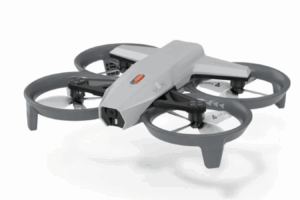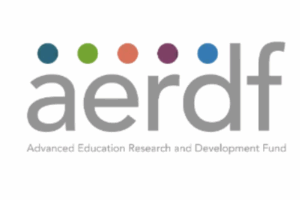Raup, D. M. & Sepkoski, J. J. Mass extinctions in the marine fossil record. N. Ser. 215, 1501–1503 (1982).
CAS
Google Scholar
Benton, M. J. Recovery of vertebrate faunas from the end-Permian mass extinction. J. Earth Sci. 21 111 (2010).
Google Scholar
Benton, M. J. Origins of biodiversity. PLoS Biol. https://doi.org/10.1371/journal.pbio.2000724 (2016).
Marshall, C. R. Forty years later: the status of the ‘Big Five’ mass extinctions. Camb. Prism Extinct. 1, e5 (2023).
Google Scholar
Casanovas-Vilar, I., van den Hoek Ostende, L. W., Janis, C. M. & Saarinen, J. eds. Evolution of Cenozoic Land Mammal Faunas and Ecosystems 25 Years of the NOW Database of Fossil Mammals Vertebrate Paleobiology and Paleoanthropology Series (Springer, 2023).
Uhen, M. D. et al. Paleobiology Database User Guide Version 1.0. PaleoBios 40(11) (2023).
Peters, S. E. & McClennen, M. The Paleobiology Database Application Programming Interface. Paleobiology 42, 1–7 (2015).
Google Scholar
Chiappe, L. M. et al. Cretaceous bird from Brazil informs the evolution of the avian skull and brain. Nature 635, 376–381 (2024).
CAS
Google Scholar
Niklas, K. J., Tiffany, B. H. & Knoll, A. H. Patterns in vascular land plant diversification. Nature 303, 1068–1070 (1983).
Google Scholar
Niklas, K. J. Measuring the tempo of plant death and birth. N. Phytol. 207, 254–256 (2015).
Google Scholar
Sepkoski, J. J. A factor analytic description of the Phanerozoic marine fossil record. Paleobiology 7 36–53 (1981).
Google Scholar
Dunne, E. M., Thompson, S. E. D., Butler, R. J., Rosindell, J. & Close, R. A. Mechanistic neutral models show that sampling biases drive the apparent explosion of early tetrapod diversity. Nat. Ecol. Evol. 7, 1480–1489 (2023).
Google Scholar
Close, R. A., Benson, R. B. J., Saupe, E. E., Clapham, M. E. & Butler, R. J. The spatial structure of Phanerozoic marine animal diversity. Science 368, 420–424 (2020).
CAS
Google Scholar
Reijenga, B. R. & Close, R. A. Apparent timescaling of fossil diversification rates is caused by sampling bias. Curr. Biol. https://doi.org/10.1016/J.CUB.2024.12.038 (2025).
Google Scholar
Marshall, C. R. et al. Quantifying the dark data in museum fossil collections as palaeontology undergoes a second digital revolution. Biol. Lett. 14, 20180431 (2018).
Google Scholar
Adaimé, M.-É., Urban, M. A., Kong, S., Jaramillo, C. & Punyasena, S. W. Pollen morphology, deep learning, phylogenetics, and the evolution of environmental adaptations in Podocarpus. New Phytol. 247, 1460–1473 (2025).
Google Scholar
Jumper, J. et al. Highly accurate protein structure prediction with AlphaFold. Nature 596, 583–589 (2021).
CAS
Google Scholar
Tropsha, A., Isayev, O., Varnek, A., Schneider, G. & Cherkasov, A. Integrating QSAR modelling and deep learning in drug discovery: the emergence of deep QSAR. Nat. Rev. Drug Discov. 23, 141–155 (2023).
Google Scholar
Müller, J. et al. Soundscapes and deep learning enable tracking biodiversity recovery in tropical forests. Nat. Commun. 14, 6191 (2023).
Google Scholar
Romera-Paredes, B. et al. Mathematical discoveries from program search with large language models. Nature 625, 468–475 (2023).
Google Scholar
Thompson, T. How AI can help to save endangered species. Nature 623, 232–233 (2023).
CAS
Google Scholar
Silvestro, D., Goria, S., Sterner, T. & Antonelli, A. Improving biodiversity protection through artificial intelligence. Nat. Sustain. 5, 415–424 (2022).
Google Scholar
Christin, S., Hervet, É. & Lecomte, N. Applications for deep learning in ecology. Methods Ecol. Evol. 10, 1632–1644 (2019).
Google Scholar
Yu, C. et al. Artificial intelligence in paleontology. Earth Sci. Rev. 252, 104765 (2024).
Google Scholar
He, Y. et al. Opportunities and challenges in applying AI to evolutionary morphology. Integr. Org. Biol. 6, 36 (2024).
Google Scholar
Mimura, K. et al. Applicability of object detection to microfossil research: implications from deep learning models to detect microfossil fish teeth and denticles using YOLO-v7. Earth Space Sci. 11, e2023EA003122 (2024).
Google Scholar
van de Kamp, T. et al. Parasitoid biology preserved in mineralized fossils. Nat. Commun. 9, 3325 (2018).
Google Scholar
Romero, I. C. et al. Improving the taxonomy of fossil pollen using convolutional neural networks and superresolution microscopy. Proc. Natl Acad. Sci. USA 117, 28496–28505 (2020).
CAS
Google Scholar
Kopperud, B. T., Lidgard, S. & Liow, L. H. Enhancing georeferenced biodiversity inventories: automated information extraction from literature records reveal the gaps. PeerJ 10, e13921 (2022).
Google Scholar
Di Martino, E. et al. DeepBryo: a web app for AI-assisted morphometric characterization of cheilostome bryozoans. Limnol. Oceanogr. Methods 21, 542–551 (2023).
Google Scholar
Liu, X. et al. Heterogeneous selectivity and morphological evolution of marine clades during the Permian–Triassic mass extinction. Nat. Ecol. Evol. 8, 1248–1258 (2024).
Google Scholar
Weeks, B. C. et al. A deep neural network for high-throughput measurement of functional traits on museum skeletal specimens. Methods Ecol. Evol. 14, 347–359 (2023).
Google Scholar
Hou, C. et al. Fossil image identification using deep learning ensembles of data augmented multiviews. Methods Ecol. Evol. 14, 3020–3034 (2023).
Google Scholar
Foster, W. J. et al. How predictable are mass extinction events? R. Soc. Open Sci. 10, 221507 (2023).
Google Scholar
Foster, W. J. et al. Machine learning identifies ecological selectivity patterns across the end-Permian mass extinction. Paleobiology 48, 357–371 (2022).
Google Scholar
Finnegan, S. et al. Paleontological baselines for evaluating extinction risk in the modern oceans. Science 348, 567–570 (2015).
CAS
Google Scholar
Cooper, R. B., Flannery-Sutherland, J. T. & Silvestro, D. DeepDive: estimating global biodiversity patterns through time using deep learning. Nat. Commun. 15, 4199 (2024).
CAS
Google Scholar
Nickolls, J. & Dally, W. J. The GPU computing era. IEEE Micro https://doi.org/10.1109/MM.2010.41 (2010).
Google Scholar
Vaswani, A. et al.Attention is all you need. In Advances in Neural Information Processing Systems 30 (eds. Guyon, I. et al.) (2017).
Koch, B., Denton, E., Hanna, A. & Foster, J. G. Reduced, reused and recycled: the life of a dataset in machine learning research. Preprint at https://doi.org/10.48550/arXiv.2112.01716 (2021).
Villalobos, P. et al. Will we run out of data? Limits of LLM scaling based on human-generated data. Preprint at https://arxiv.org/abs/2211.04325v2 (2024).
Sayers, E. W. et al. GenBank 2025 update. Nucleic Acids Res. 53, D56–D61 (2025).
Google Scholar
Waller, J. Citizen Science on GBIF – 2019. GBIF Data Blog https://data-blog.gbif.org/post/citizen-science-on-gbif-2019/ (2019).
Heberling, J. M., Miller, J. T., Noesgaard, D., Weingart, S. B. & Schigel, D. Data integration enables global biodiversity synthesis. Proc. Natl Acad. Sci. USA 118, e2018093118 (2021).
CAS
Google Scholar
Renaudie, J., Lazarus, D. B. & Diver, P. Nsb (Neptune Sandbox Berlin): an expanded and improved database of marine planktonic microfossil data and deep-sea stratigraphy. Palaeontol. Electron. 23, 1–28 (2020).
Google Scholar
Žliobaitė, I. et al. The NOW database of fossil mammals. Vertebr. Paleobiol. Paleoanthropol. F1250, 33–42 (2023) .
Google Scholar
Kocsis, Á. T., Reddin, C. J., Alroy, J. & Kiessling, W. The R package divDyn for quantifying diversity dynamics using fossil sampling data. Methods Ecol. Evol. 10, 735–743 (2019).
Google Scholar
Smith, J. et al. BioDeepTime: a database of biodiversity time series for modern and fossil assemblages. Glob. Ecol. Biogeogr. 32, 1680–1689 (2023).
Google Scholar
Smith, J. A. et al. Increasing the equitability of data citation in paleontology: capacity building for the big data future. Paleobiology 50, 165–176 (2024).
Google Scholar
Nicol, D. The number of living animal species likely to be fossilized. Fla. Scientist 40, 135–139 (1977).
Google Scholar
Foote, M., Miller, A. I., Raup, D. M. & Stanley, S. M. Principles of Paleontology (Macmillan, 2007).
Andermann, T., Antonelli, A., Barrett, R. L. & Silvestro, D. Estimating alpha, beta, and gamma diversity through deep learning. Front. Plant Sci. 13, 839407 (2022).
Google Scholar
Zhuang, F. et al. A comprehensive survey on transfer learning. Proc. IEEE 109, 43–76 (2021).
Google Scholar
Kim, H. E. et al. Transfer learning for medical image classification: a literature review. BMC Med. Imaging 22, 69 (2022).
Google Scholar
Theodoris, C. V. et al. Transfer learning enables predictions in network biology. Nature 618, 616–624 (2023).
CAS
Google Scholar
Hauffe, T., Cantalapiedra, J. L. & Silvestro, D. Trait-mediated speciation and human-driven extinctions in proboscideans revealed by unsupervised Bayesian neural networks. Sci. Adv. 10, eadl2643 (2024).
Google Scholar
Marjoram, P., Molitor, J., Plagnol, V. & Tavaré, S. Markov chain Monte Carlo without likelihoods. Proc. Natl Acad. Sci. USA 100, 15324–15328 (2003).
CAS
Google Scholar
Silvestro, D. et al. A 450 million years long latitudinal gradient in age-dependent extinction. Ecol. Lett. 23, 439–446 (2020).
Google Scholar
Lambert, S., Voznica, J. & Morlon, H. Deep learning from phylogenies for diversification analyses. Syst. Biol. 72, 1262–1279 (2023).
Google Scholar
Close, R. A. et al. Diversity dynamics of Phanerozoic terrestrial tetrapods at the local-community scale. Nat. Ecol. Evol. 3, 590–597 (2019).
Google Scholar
Ahmad, W., Ali, H., Shah, Z. & Azmat, S. A new generative adversarial network for medical images super resolution. Sci. Rep. 12, 1–20 (2022).
Google Scholar
Nie, D. et al. Medical image synthesis with deep convolutional adversarial networks. IEEE Trans. Biomed. Eng. 65, 2720–2730 (2018).
Google Scholar
Khosravi, B. et al. Few-shot biomedical image segmentation using diffusion models: beyond image generation. Comput. Methods Prog. Biomed. 242, 107832 (2023).
Google Scholar
Huang, Y. et al. SmartEdit: exploring complex instruction-based image editing with multimodal large language models. In 2024 IEEE/CVF Conference on Computer Vision and Pattern Recognition (CVPR), https://doi.org/10.1109/CVPR52733.2024.00799 (IEEE, 2023).
Rawte, V., Sheth, A. & Das, A. A survey of hallucination in large foundation models. Preprint at https://doi.org/10.48550/arXiv.2309.05922 (2023).
Zhang, Y. et al. Siren’s song in the AI ocean: a survey on hallucination in large language models. Comput. Linguist. https://doi.org/10.1162/coli.a.16 (2025).
Bai, Y. et al. Training a helpful and harmless assistant with reinforcement learning from human feedback. Preprint at https://doi.org/10.48550/arXiv.2204.05862 (2022).
Bagenal, J. Generative artificial intelligence and scientific publishing: urgent questions, difficult answers. Lancet 403, 1118–1120 (2024).
Google Scholar


















































